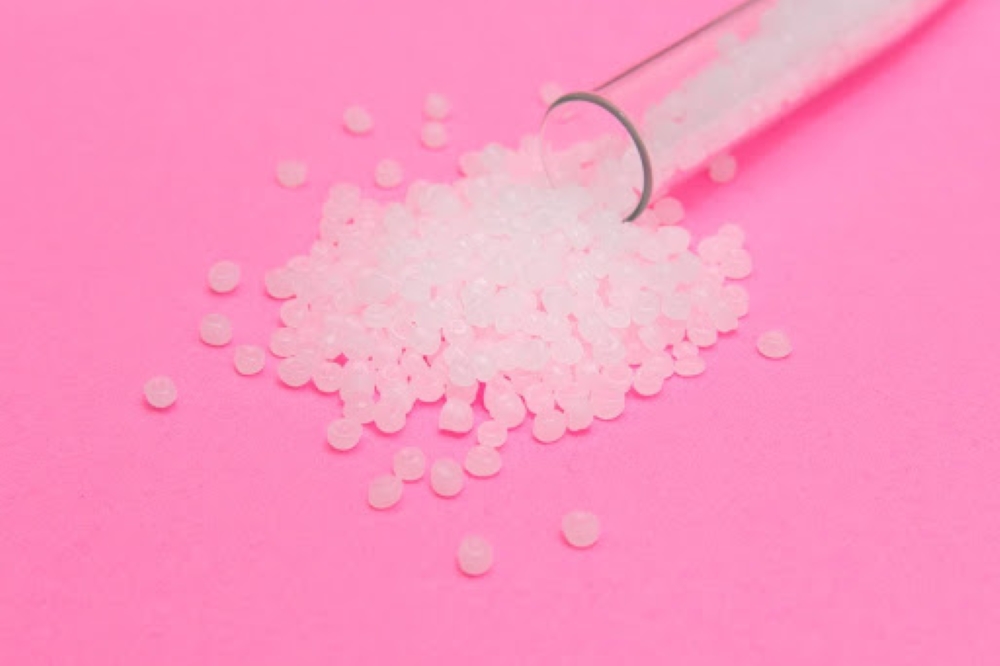
The evolution of Plastic Manufacturing: From early days to cutting-edge technologies
Blog
The evolution of Plastic Manufacturing: From early days to cutting-edge technologies
Plastics have become an integral part of modern life, with applications in nearly every industry. From packaging to construction to healthcare, plastics offer durability, versatility, and cost-effectiveness that have made them a staple material across the globe. The growth of the plastics industry over the past century has been exponential; in 2023 alone, plastic production topped 420 million metric tonnes worldwide.
Behind this explosive expansion has been a story of scientific ingenuity, entrepreneurial ambition, and steady technological innovation. The discovery and refinement of materials, processes, and applications has driven the development of plastic manufacturing through distinct eras, from early experimentation to the rise of major petrochemical firms to today’s cutting-edge technologies and the production of advanced materials, enabling sustainable bioplastic production.
Early history
The origins of manufactured plastics can be traced to the mid-19th century, when British chemist Alexander Parkes unveiled Parkesine, an early form of celluloid, at the 1862 London International Exhibition. This marked the genesis of the plastics industry, though widespread commercialisation would have to wait. Leo Baekeland, a Belgian-American chemist, discovered Bakelite in the early 1900s, and it later received a patent as the first fully synthetic plastic polymer.
The 1920s saw major advances from American chemists working at companies like DuPont. They learned to manipulate polymers at the molecular level to control their hardness, strength, and flexibility. These techniques paved the way for mass production, though usage was still limited given the primitive state of plastic processing technology. The industry would soon take off during World War II.
Wartime boom and postwar proliferation
World War II acted as a catalyst, drastically accelerating plastic development and usage to meet military supply needs. With metals like steel in short supply, plastics emerged as a versatile substitute, best embodied by nylon parachutes, plastic aircraft parts, and myriad other applications. Production levels skyrocketed as petrochemical companies built new facilities and the American public was introduced to novel materials through widespread utilisation in the armed forces.
The postwar years saw an explosion of applications for everyday consumer goods made possible by advanced processing methods like injection moulding. New extrusion technologies also enabled the production of synthetic fibres and films like polythene bags. As usage grew in packaging, construction, automotive parts, electronics, and more, annual plastic production surpassed half a million metric tonnes in the Americas by 1950. The modern plastics industry was born.
Global conglomeration and consolidation
Major petrochemical companies like Union Carbide, Dow Chemical, and DuPont began to dominate by the 1960s as a result of advancements in polymer chemistry and incentives from synergy with their current resources and goods. They invested heavily in global assets and capacity acquisitions to meet ballooning worldwide demand. Under their stewardship, plastic manufacturing grew into an unprecedented multibillion-dollar business.
The industry began to consolidate substantially starting in the late 1990s due to oversupply issues and slackened growth. Faced with heavy competition, manufacturers pursued large mergers and acquisitions intended to strengthen their market position and achieve economies of scale through the integration of resources and production networks. For instance, DuPont and Dow Chemical merged in 2017 in a deal worth $130 billion. Today, polymer production is concentrated in the hands of global conglomerates operating advanced manufacturing facilities worldwide.
Bioplastics and sustainable trends
While plastics brought functionality, questions emerged by the 1970s concerning environmental impact and overreliance on fossil fuels. The contemporary industry faces ecological issues like finite oil supplies, product disposal, and plastic pollution, exacerbated by increasing usage and negative climate change feedback. In response, manufacturers have accelerated bioplastic development by utilising renewable plant-based feedstocks in place of oil and gas.
As environmental awareness grows among consumers, brands choose sustainable bioplastics for packaging, like Coca-Cola’s PlantBottle made from sugarcane ethanol. Production capacities currently remain modest compared to conventional plastics but are forecast to expand as innovative technologies improve cost structures. Key players, including major chemical companies as well as startups like Anellotech in the United States, are also pursuing novel recycling solutions to enable true circularity within the industry. With increased adoption, bioplastics promise to mitigate sustainability issues by reducing reliance on fossil fuels.
Future outlook
Plastic manufacturing has progressed remarkably from early experimental materials to today’s ubiquitous and multifaceted role across nearly every global industry. Production has proliferated on the backbone of continual innovation — from breakthrough polymer research to the rise of scalable petrochemical platforms to cutting-edge recycling technologies. Even with increased negative attention and tighter regulation, plastics retain intrinsic properties like durability, cost-effectiveness, and customisability that seem likely to cement their relevance into the foreseeable future.
However, the industry faces ecological dilemmas that require sustainable solutions. Transitioning more feedstock supply chains to utilise renewables can help decouple production from finite resources while enabling improved end-of-life recyclability. As technology expands possibilities, manufacturers have the opportunity to spearhead responsible stewardship, ensuring plastics retain their invaluable utility while minimising their lasting impact.
Early plastic materials and production processes
The earliest semi-synthetic plastics often utilised natural polymers like cellulose combined with chemical plasticisers for malleability. Developed in 1862, Parkesine was made by dissolving cellulose nitrate in a solvent, then removing it to leave a moldable material that could be shaped when heated. Unfortunately, Parkesine was prone to cracking and was never produced on a large commercial scale.
The first fully synthetic plastic, Bakelite, marked a pivotal advancement when it was invented in 1907 using formaldehyde and phenol. These compounds were mixed together at high temperatures using heat and pressure in a process called condensation polymerisation. The thermosetting properties of the new material, along with its electrical nonconductivity, made Bakelite suitable for myriad industrial, commercial, and consumer uses ranging from insulation to jewellery to appliances over the next several decades.
Later polymers, such as polystyrene and polyvinyl chloride, used vinyl monomers mixed with heat, pressure, and catalysts to make mixtures that could be used for foam, cling wrap, and long-lasting pipe applications after being extruded or moulded. Polythene was another milestone discovery in 1933, enabling the mass production of plastic films, food containers, shampoo bottles, and many other ubiquitous packaging applications seen worldwide today.
Early processing technology
While polymer research uncovered dozens of formulations, truly capitalising on plastics necessitated developing efficient processing technology to shape raw materials for end-use products. This emerged in stages in the early 20th century.
Compression moulding was an initial breakthrough adapted from vulcanised rubber processes, using heat and pressure to directly mould a slab of polymer material. Materials like Bakelite were well suited for this method during the interwar period. Later came extrusion, commonly used today, in which granular plastic pellets are gravity fed into a heated barrel to be mixed, conveyed, and pushed continuously out of a die in the desired shape. Extrusion can directly produce filaments, films, coated wires, pipes, and sheets.
Injection moulding offered even more flexibility by utilising pneumatically powered plungers to force molten polymer into a mould, allowing detailed three-dimensional shaping. Wider adoption followed World War II, along with advanced machining control systems enabling mass production of intricate plastic parts like gears, fasteners, appliance housings, and toys. New computerised manifestations like 3D printing continue to expand processing capabilities today.
Peak oil dynamics and the rise of bioplastics
Plastics manufacturing has principally relied on petrochemical feedstocks since large-scale commercialisation after World War II. However, 90% of plastics today are derived from virgin fossil resources. As such materials deplete in line with peak oil dynamics, producers have increasingly looked to renewable bioplastics as an alternative.
Most traditional plastics are carbon intensive, with substantial greenhouse gas emissions attributed to raw material extraction, transport, and incineration after use. Bioplastics utilise plant sugars or starches as a feedstock, introducing sustainability benefits around renewability and carbon neutrality. While bioplastics currently comprise less than 1% of the total plastic market share, production capacity is rapidly scaling up.
Leading bioplastics today include bio-based polythene (PE), polythene terephthalate (PET), polyamides (nylons), and novel polyhydroxyalkanoate (PHA) and polylactic acid (PLA) polymers derived from bacterial fermentation. Bio-based PE and PET are chemically identical to conventional formulations, with the advantage of coming from ethanol versus oil and gas. Because the materials are compositionally equivalent, existing production infrastructure, like extruders and moulders, can process bioplastic resins.
Significant investments continue to expand global capacities, though costs do remain higher than conventional equivalents. Regardless, market adoption is accelerating within the packaging industry and beyond as brands respond to eco-conscious consumer demand. Technological improvement around crop yields along with process efficiency gains also promise to close cost gaps further and enable bioplastics to reach over 25% market share by 2050, according to projections.
Market leaders driving Innovation
Today’s plastics industry features massive global conglomerates along with regional manufacturers and speciality producers driving the latest innovations. Market leaders maintain substantial research and development budgets to continually advance polymer chemistry and transform plastic applications across industries.
Dow Chemical currently holds the top market share position, having pioneered revolutionary materials like polythene and expanding through acquisitions like DuPont. Borealis of Austria focuses on polyolefin plastics, while French firm Arkema develops advanced technical polymers and bioplastic resins used worldwide. BASF of Germany also operates one of the industry’s largest R&D centres to create foam, coatings, and functional plastic innovations.
Emerging firms are also impacting development, including Anellotech and Genecis Bioindustries based in the United States. The former uses patented technology to recycle plastic waste directly back into chemicals, while the latter chemically recycles disposable plastics into custom materials. These startups exemplify usable processes and product improvements, helping address sustainability challenges around the plastics lifecycle.

The manufacturing landscape
Global demand is primarily met through major production centres in North America, Europe, and Asia, responsible for over 90% of total output. China has grown into the top global producer, followed by the United States. Post-consumer and industrial waste generation in these regions also necessitates substantial recycling infrastructure to support the circular economy.
Domestically, the plastics manufacturing sector comprises over 16,000 enterprises, accounting for nearly one million American jobs. The density is highest across historical industrial corridors bordering the Great Lakes and Gulf Coast, where feedstock and logistical infrastructure access are strongest. Additionally, small and medium-sized businesses provide nearly 60% of the equipment and component supplies.
Market competition is high given the commoditisation of many plastic resins. Maintaining technology leadership and differentiation is key, as exemplified by Australian firms like Qenos utilising homegrown expertise around chemical intermediates for export. Adapt Polymer and Planet Protector Packaging, based locally, focus instead on developing specialty bioplastic compounds to service eco-conscious brands across packaging and textiles.
Domestic production may continue to move closer to point-of-use markets as environmental pressures intensify and oil economics change less favourably because labour costs and regulatory incentives like recycled content standards for manufacturers outweigh transportation costs. Nearshoring trends could benefit North American plastics in the long run.
Conclusion
In conclusion, the journey of plastic manufacturing has witnessed a remarkable evolution, spanning from its humble beginnings to the forefront of cutting-edge technologies. The industry has navigated through various phases, adapting to societal needs, environmental concerns, and technological advancements. From the simplicity of early plastic production to the sophistication of modern techniques, this evolution reflects both the incredible versatility of plastic materials and the imperative for sustainable practices.
As we move forward, the ongoing development of innovative technologies promises to further reshape the landscape of plastic manufacturing, emphasising sustainability, efficiency, and reduced environmental impact. The evolution of plastic manufacturing serves as a testament to human ingenuity and the ongoing commitment to balancing industrial progress with responsible environmental stewardship.
Book your free consultation
Give us a call to book your free consultation and learn how much value can be added to your business with SDI Plastics by your side.